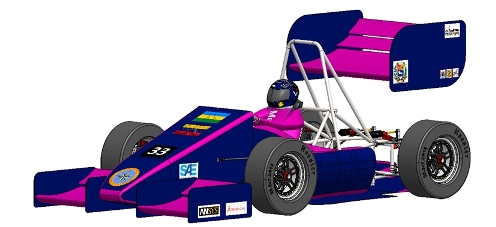PROPUESTA DE UN DISEÑO AERODINÁMICO PARA EL PROTOTIPO FÓRMULA SAE UDO FP6
Abstract
This paper presents a proposal for aerodynamic design for FORMULA SAE UDO FP6 prototype, which will allow good aerodynamic performance of the car on the track and good results in the International Formula SAE competitions. Initially the aerodynamic parameters that influence the components that are part of the aerodynamic package of a Formula SAE prototype were defined, such as the bodywork, tires, suspension, wings, undertray and diffuser. Then, models of the geometries of the aerodynamic components that make up the Formula SAE UDO FP6 prototype were built with the help of CAD software, considering the available space and the international SAE regulations. Next, use of CFD software, computational models of the bodywork geometries were created to obtain the velocity and air pressure fields with which it was possible to analyze and compare the flow behavior in each model, and determine the coefficients aerodynamics to later select the best bodywork geometry according to aerodynamic performance. Then, computer models of the Formula SAE UDO FP6 prototypes were developed with the models of undertray, diffuser, rear and front wings in order to determine the aerodynamic coefficients of the models. Subsequently, with the drag and lift coefficient, the aerodynamic performance of each prototype was calculated, and thus the models of the undertray, diffuser, rear and front wings that make up the Formula SAE UDO FP6 prototype were progressively selected.Downloads

Downloads
Published
How to Cite
Issue
Section
License
The authors of papers accepted for publication by the RLMM, should recognize the complete transfer of copyright (in all languages) to the RLMM. This transfer includes the right by the RLMM to adapt the article for digital or printed reproduction without altering the written content and information displayed in tables or figures within. The authors retain the copyright and guarantee the journal the right to be the first publication of the work as well as licensed under a Creative Commons Attribution License 4.0 Internacional (CC BY 4.0) which allows others to share the work with an acknowledgment of the authorship of the work and the initial publication in this journal.



